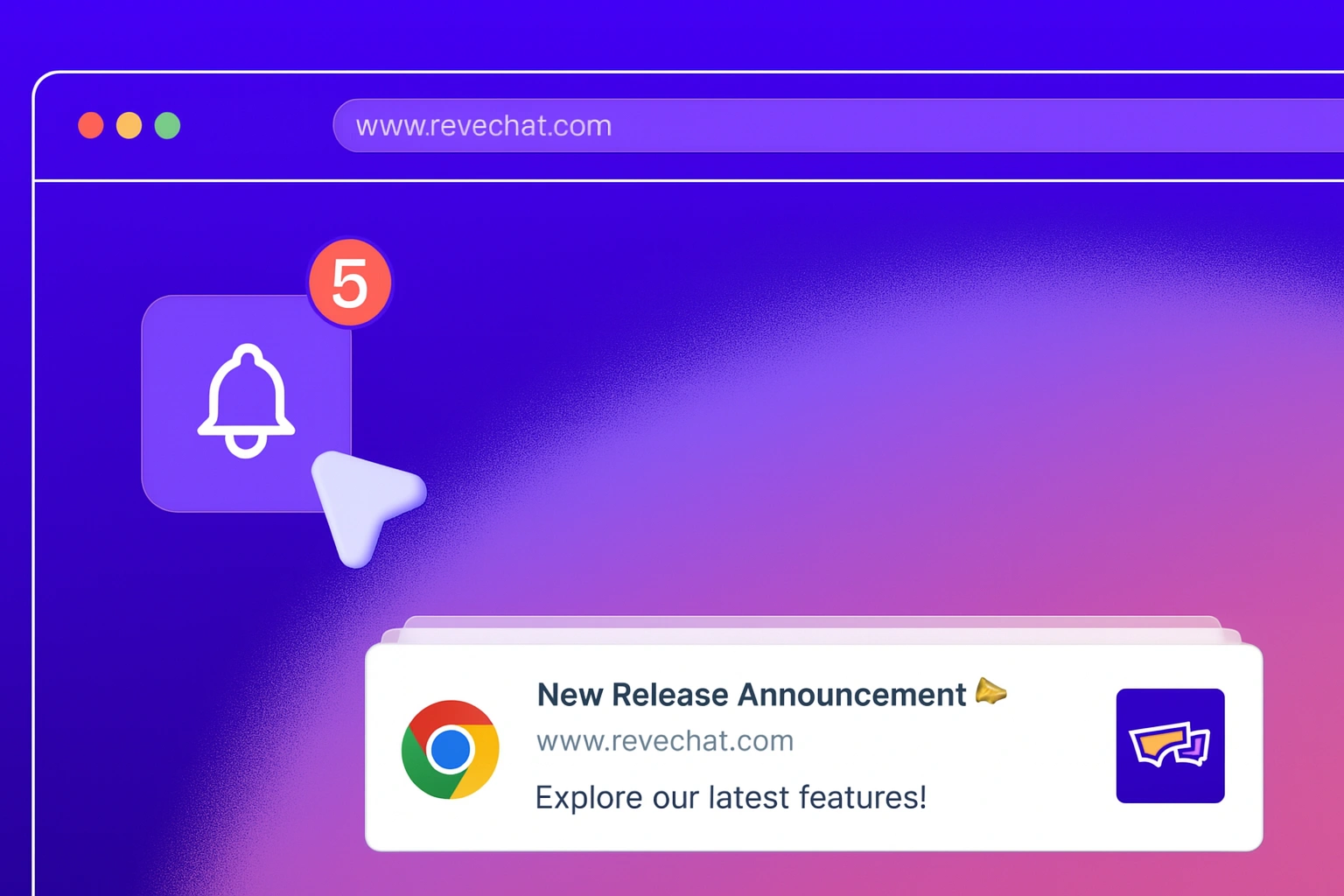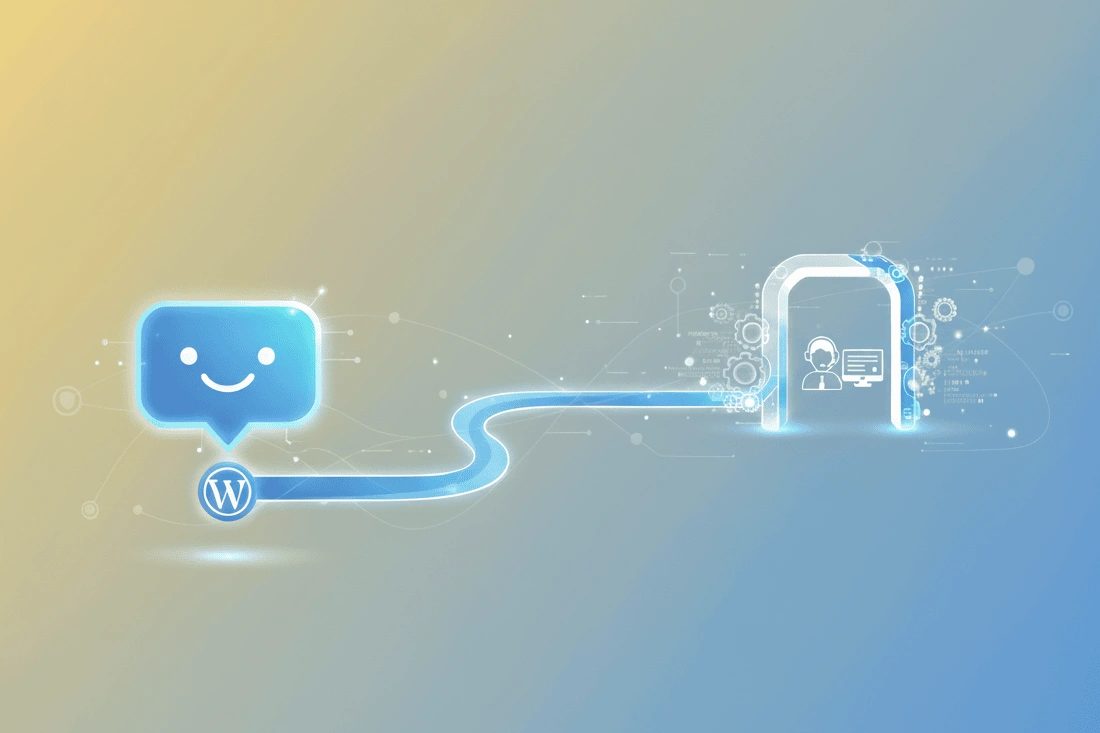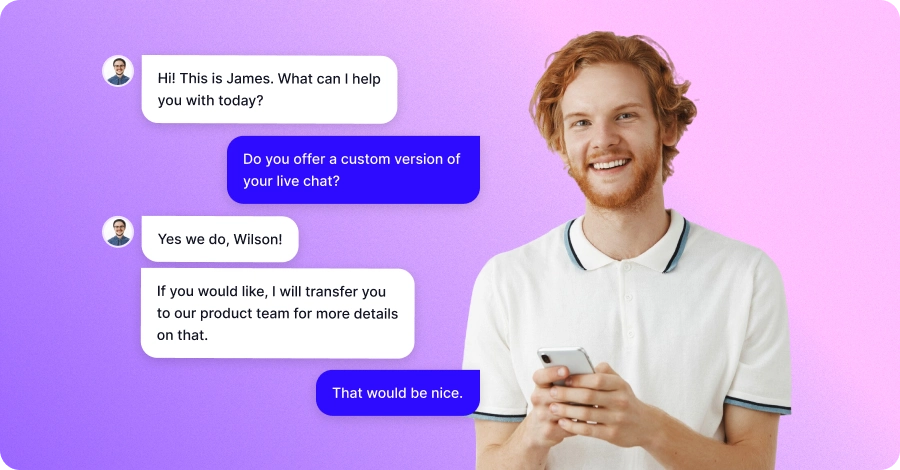Conversational AI vs Chatbot: Why They Differ?
- January 2, 2023
- 7 mins read
- Listen

In the digital era, businesses are adopting modern strategies and software to improve how they handle customer queries. That is where Live Chat and Chatbot have provided a lot of value. But as time passes, new technologies emerge and that is where Conversational AI comes in.
While both chatbots and conversational AI serve a similar purpose, both operate quite differently. Thus, understanding their applications can be extremely important for your business as it allows you to choose the right customer service platform for your company.
So let’s talk about chatbot vs conversational AI and lay out all the differences between the two technologies.
What is a Chatbot?
A chatbot is a program that is designed to emulate human conversation. Through rules and predefined responses, chatbots are capable of resolving customer queries. Hence, businesses make use of chatbots to automate a good chunk of their customer service.
There are three main types of chatbots:
- Rule-Based Chatbot: A chatbot that operates with predefined sets of rules and uses keywords or other cues to start generating responses.
- AI-Powered Chatbots: These are more advanced than rule-based ones, as AI chatbots are more adaptable and use Natural Language Processing (NLP) to offer better responses.
- Hybrid Chatbots: Combining rule-based and AI capabilities, a hybrid chatbot provides more structured responses while continuously evolving with additional information.
Examples of Chatbots
Here are examples of chatbots for each type.
REVE Chat
Using the power of conversational AI, REVE Chat provides chatbots and AI Agents to complete tasks for businesses. Using our products, businesses can automate their customer service and provide context-aware and personalized responses in any language.
Not to mention, our omnichannel capabilities allow businesses to handle queries at scale and keep customers happy with quick resolution. This is all possible due to the capabilities of AI.
ELIZA
One of the first chatbots ever created, ELIZA was created using pre-defined rules to emulate a therapist’s role. It surprisingly still works fairly well and many educational institutions use it for knowledge purposes.
Duolingo Chatbot
One of the best language learning platforms, Duolingo, utilizes the power of AI to help learners. Duolingo’s chatbot assists learners in understanding phrases in different languages by accurately translating and generating text. A great utilization of the power of AI.
What is Conversational AI?
Conversational AI is a system of programs that can respond like a human. It is a broader category of AI that uses many different technologies like NLP, Machine Learning (ML), and more to understand and generate context-aware responses.
There are many types of conversational AI and here are some of the key ones:
- AI Assistants: These systems are designed to help customers complete any task when the query is given.
- AI Voice: Capable of emulating human speech, these AI can generate spoken words to sound more expressive and natural.
- AI Agents: While not just conversational AI, AI Agents can understand and generate human-like responses at a high level while autonomously completing other tasks.
Examples of Conversational AI
Here are some examples of conversational AI.
H&M’s Virtual Assistant
A prominent e-commerce and retail multinational company, H&M, uses its virtual assistant to converse in a personalized way and complete tasks on the fly. It provides a great experience for consumers and that way, H&M keeps their customers satisfied.
Alexa
As one of the best virtual assistants in the market, Alexa’s speech recognition technology allows them to analyze voice commands and perform tasks. Also, Alexa will learn about your habits, behavior, and tone to provide users the service they deserve.
ChatGPT
One of the most well-known chatbots, ChatGPT provides answers to general queries in an organized manner. Also, it will always reference your past queries in a chat and provide responses that will suit your tone and needs.
The Differences Between Chatbots and Conversational AI
In short, conversational AI is capable of handling customer queries in a personalized way. Their ability to be context-aware allows businesses to serve their customers better. On the other hand, chatbots have limited learning capabilities, limited context awareness, and personalization. Thus, their ability to personalize solutions for customers is limited.
That said, here is a table listing the general differences between the two.
|
Features |
Chatbots |
Conversational AI |
|
Types of Responses |
Use Predefined or AI-powered Responses |
Contextual and AI-led Responses |
|
Learning Ability |
Limited to Predefined Learning |
Continuously Learns from Interactions |
|
Task Handling Capabilities |
Can Handle Simple or Moderately Complex Tasks |
Can Handle Complex Queries |
|
Personalization |
Basic Personalization |
Adapts According to Chat History and Behavior |
|
Context Awareness |
Can be Context-aware if Powered by AI |
Remembers Past Interactions |
|
Content-Type |
Supports Text mostly |
Supports Text and Voice |
|
Multilingual Capabilities |
Limited |
Extensive |
|
Decision-Making Capabilities |
Follows Predefined Rules or AI-driven Logic |
AI-powered Decision Making |
The differences between the two make one thing clear and that is that conversational AI is better at analyzing human language, provides contextual responses, and has superior learning ability.
That does not mean chatbots are inferior as you can implement one with conversational AI.
Thus, all chatbots can be conversational AI but all conversational AI are not chatbots.
Hence, the real difference lies between rule-based chatbots and conversations AI chatbots. So, let’s take a look at how conversation AI chatbots are better than traditional rule-based chatbots.
Rule-Based Chatbots vs Conversational AI Chatbots
Here is a table listing the differences between Rule-Based and Conversational AI chatbots.
|
Features |
Rule-Based Chatbots |
Conversational AI Chatbots |
|
Types of Responses |
Use Predefined Responses |
AI-Powered and Contextual Responses |
|
Learning Ability |
Limited to Predefined Rules |
Continuously Learns from Interactions |
|
Task Handling Capabilities |
Handles Simple, Structured Queries |
Can Handle Complex Queries |
|
Personalization |
Limited to Fixed Responses |
Adapts According to Chat History and Behavior |
|
Context Awareness |
Cannot be Context Aware |
Remembers Past Interactions |
|
Content-Type |
Supports Text |
Supports Text and Voice |
|
Multilingual Capabilities |
None |
Extensive when Trained with LLM |
|
Decision-Making |
Follows Predefined Rules |
AI-powered Decision Making |
As you can see, there are a lot of differences between Rule-Based and Conversational AI chatbots. Here is a bit of a breakdown for that:
- Types of Responses: Rule-based chatbots only used predefined responses to keywords or cues. Meanwhile, conversation AI chatbots can analyze queries and provide more contextual responses that best suit the situation.
- Learning Ability: Rule-based chatbots do exactly what their name suggests when it comes to learning: follow their ruleset. On the other hand, a conversation AI chatbot is capable of adapting and learning from its past conversations.
- Task Handling Capabilities: Rule-based chatbots can only handle simple tasks while conversational AI chatbots can solve easy to complex queries.
- Personalization & Context Awareness: Conversation AI chatbots are context-aware and provide personalized responses based on tone. In contrast, rule-based chatbots only personalize text if their ruleset allows it and are also not context-aware.
- Content-Type: Traditional chatbots can only resolve queries in text while conversation AI chatbots can do it in both text and voice.
- Multilingual Capabilities: Using the power of AI, conversational chatbots can answer queries in any language while rule-based chatbots cannot do that as they cannot analyze multiple languages at the same time.
- Decision-Making: Conversational AI chatbot makes decisions smartly by trying to understand the intent behind customer queries while rule-based chatbots make simple decisions according to their ruleset.
Why Conversational AI Chatbot is the Best for Businesses?
Given all the differences we have listed, it is clear that a conversational AI chatbot is the best option for a business. While rule-based chatbots offer value for answering FAQs or resolving routine tasks, conversation AI chatbots can do that and more.
Thus, for a business, conversation AI chatbots can:
- Automate any type of customer query, regardless of the complexity of the problem.
- Can provide context-aware and personalized responses in any language.
- Makes smart responses and decisions when handling queries.
- Can analyze both text and voice.
- Capability of learning from past responses and adapting to the tone and behavior of the customer.
For all of these reasons, conversational AI chatbots are excellent for handling customer service for your business.
In Conclusion
Both chatbots and conversation AI have a lot of uses for businesses. While traditional chatbots can handle simple queries, conversational AI chatbots can handle problems of any complexity. Not only that, but they can also provide more context-aware and personalized responses for customers.
Hence, for businesses, a conversation AI chatbot is the best solution and all companies can use it to automate queries and keep customers happy.




